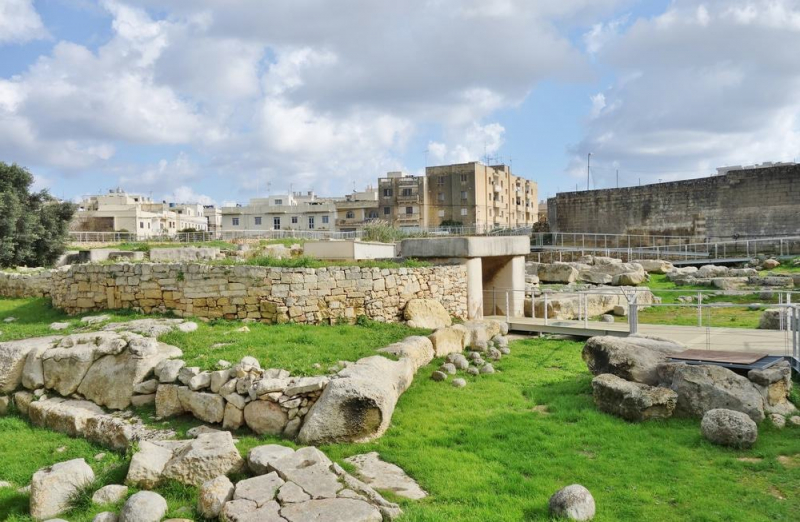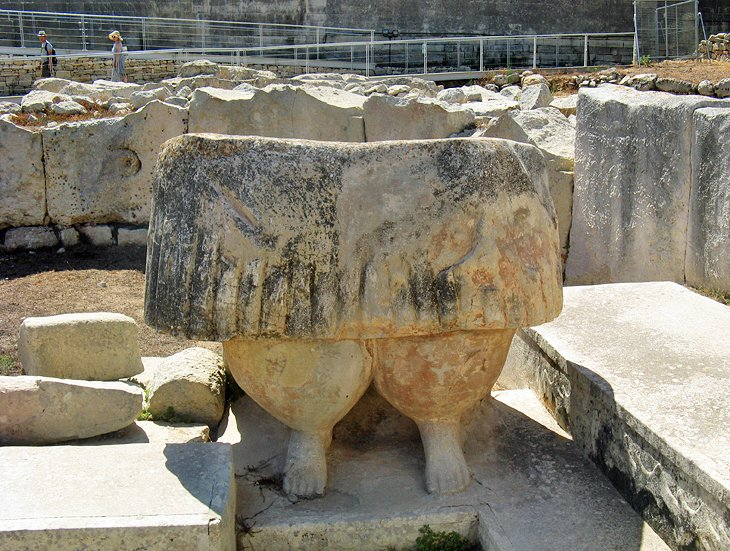Prehistoric Tarxien Temples, Island of Malta
The UNESCO-listed Tarxien Temples, which comprise four megalithic complexes, are Malta's largest and best-preserved prehistoric cult sites. The site, which was excavated in 1914 and covers a total area of 5,400 square meters, showcases the aesthetic achievements of Malta's mysterious prehistoric society between 3,600 BC and 2,500 BC during the "Temple Period" (Late Neolithic Period).
The Tarxien Temples features outstanding copies of stone reliefs and sculptures discovered here; the originals are on show at the National Museum of Archeology in Valletta. Surprisingly elaborate spiral designs and animal motifs adorn the stone walls of the four adjoining temples. The South Temple, with its colourful reliefs depicting goats, pigs, bulls, and a ram, houses the largest collection of art. A statue of a fertility goddess with powerful legs, petite dainty feet, and a pleated skirt is also on display.
The East Temple is made up of solid slab walls with oracle holes that may be seen. The Central Temple has a six-apse architectural layout and a technically advanced arched roof. Notably, the Hal Saflieni Hypogeum is within walking distance of the Tarxien Temple's ancient monument. Both places are easily accessible in a single day.
Location: Neolithic Temples Street, Tarxien, Island of Malta, Malta
Highlights: the National Museum of Archeology, the East Temple, the Central Temple, the South Temple, Hal Saflieni Hypogeum, ...
Best time to visit: mid June to mid September.









